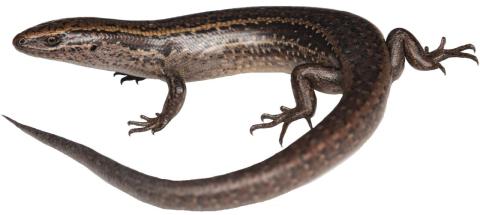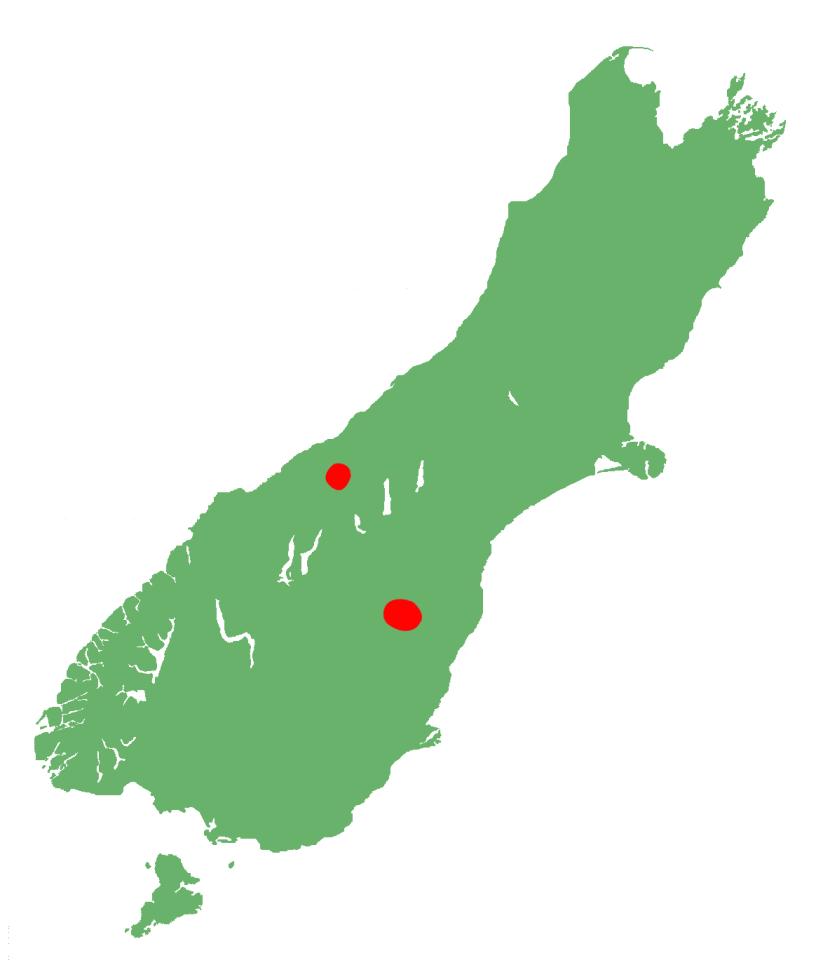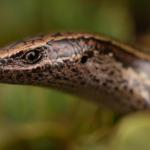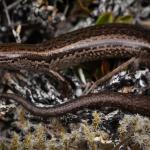- Home
- Herpetofauna Index
- Native
- Oligosoma Aff. Inconspicuum "North Otago"
Oligosoma aff. inconspicuum "North Otago"
Oteake skink
Oligosoma aff. inconspicuum "North Otago"

Length: SVL up to 70 mm, with the tail being much longer than the body length.
Weight: Unknown
Description
A gorgeous, poorly-known relative of the cryptic skink that has recently been identified as being a distinct taxon. Dorsal surface is light to dark brown and sometimes bears a dark mid dorsal stripe and black flecks. It may also bear dull-brown dorsolateral stripes. Lateral surfaces bear a dark brown band that is typically rough-edged and often bears pale speckles. Ventral surface grey-brown.
Life expectancy
Unknown.
Distribution
This species is known from Oteake Conservation Park (North Otago). Here, it is only known from two broad locations, one of which, it may no longer exist at. Interestingly, an Oteake skink was identified at Mount Solution in Westland. The specific relationship between these taxa is uncertain. They are genetically indistinguishable. However, the population at Mount Solution is over 100 km away and the single known individual looks quite different to Oteake skinks from North Otago. Therefore, it is possible that this species gradually clines and populations in between are yet to be found.
Ecology and habitat
These skinks are diurnal and terrestrial (occasionally semi-arboreal climbing into tall shrubs like Dracophyllum). While they do sun bask, they typically do so in a cryptic manner, while hiding in dense vegetation. These skinks are known to inhabit tussockland, shrubland, and talus in alpine areas (>1000 m). They appear to mostly thrive in areas with diverse, dense vegetation like snow tōtara and Dracophyllum.
Social structure
Unknown.
Breeding biology
Poorly understood.
Diet
Feeds on small invertebrates and on the fruits of native shrubs, and the nectar of flowers.
Disease
Unknown.
Conservation strategy
This species is not being actively and is not formally described. However, it has been recognized as a potentially distinct taxon (Hitchmough et al. 2021). Future work will aim to resolve the taxonomic status of this species and its relationship with other members of the inconspicuum complex.
Interesting notes
Oteake skink was only recognized as a distinct taxa in 2016.




